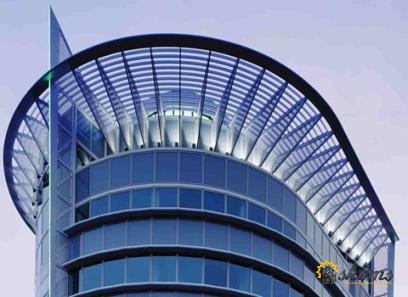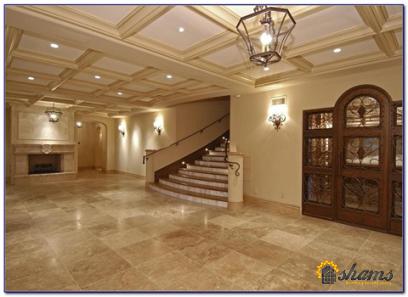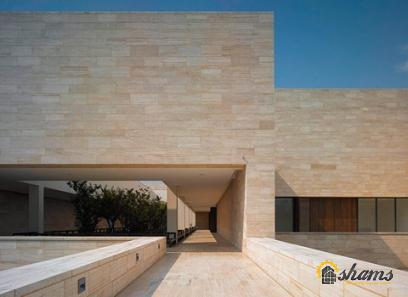In recent years, the demand for innovative and sustainable building materials has led to the rise of the cultured stone facade. Offering a stunning visual appeal, coupled with its durability, affordability, and eco-friendly characteristics, cultured stone facade has become a game-changer in the construction and design industry. In this article, we delve into the key features of cultured stone facade and explore how this material has revolutionized the way buildings are designed and constructed. 1. Definition and composition: Cultured stone facade, also known as manufactured stone veneer, is a man-made material that replicates the appearance of natural stone. It typically comprises a mixture of lightweight aggregates, Portland cement, and iron oxide pigments.

.
 The manufacturing process involves casting the material into molds and carefully hand-painting to recreate the distinctive textures and colors of various natural stones. 2. Visual appeal and versatility: One of the notable advantages of cultured stone facade is its ability to mimic the look and texture of natural stone without the high cost and weight associated with it. This material offers a versatile range of color options, textures, and finishes, allowing architects and homeowners to achieve desired aesthetics and match the overall design theme. From rugged and rustic to sleek and contemporary, cultured stone facade can add a touch of elegance and sophistication to any building project.
The manufacturing process involves casting the material into molds and carefully hand-painting to recreate the distinctive textures and colors of various natural stones. 2. Visual appeal and versatility: One of the notable advantages of cultured stone facade is its ability to mimic the look and texture of natural stone without the high cost and weight associated with it. This material offers a versatile range of color options, textures, and finishes, allowing architects and homeowners to achieve desired aesthetics and match the overall design theme. From rugged and rustic to sleek and contemporary, cultured stone facade can add a touch of elegance and sophistication to any building project.
..
 3. Durability and low-maintenance: Unlike natural stone, cultured stone facade is designed to be highly durable and resistant to weathering, impact, and general wear and tear. It is engineered to withstand freeze-thaw cycles, extreme temperature variations, and UV exposure, ensuring long-lasting performance. Additionally, since cultured stone veneers are non-porous and do not absorb moisture, they are less prone to cracking, chipping, or fading over time. This inherent durability translates to minimal maintenance requirements, saving both time and money for property owners. 4. Affordability: Compared to natural stone or full masonry construction, cultured stone facade is a cost-effective alternative without compromising on aesthetics or quality. The manufacturing process of cultured stone veneer reduces the need for expensive labor and heavy machinery, resulting in considerable cost savings. Moreover, the lightweight nature of cultured stone allows for easier handling and installation, reducing construction time and labor costs further.
3. Durability and low-maintenance: Unlike natural stone, cultured stone facade is designed to be highly durable and resistant to weathering, impact, and general wear and tear. It is engineered to withstand freeze-thaw cycles, extreme temperature variations, and UV exposure, ensuring long-lasting performance. Additionally, since cultured stone veneers are non-porous and do not absorb moisture, they are less prone to cracking, chipping, or fading over time. This inherent durability translates to minimal maintenance requirements, saving both time and money for property owners. 4. Affordability: Compared to natural stone or full masonry construction, cultured stone facade is a cost-effective alternative without compromising on aesthetics or quality. The manufacturing process of cultured stone veneer reduces the need for expensive labor and heavy machinery, resulting in considerable cost savings. Moreover, the lightweight nature of cultured stone allows for easier handling and installation, reducing construction time and labor costs further.
…
 5. Eco-friendly properties: Sustainability has become a key consideration in modern construction practices. Cultured stone facade is inherently more sustainable than its natural stone counterpart. The manufacturing process consumes fewer resources and produces less waste. Moreover, due to its lightweight composition, it requires less energy to transport and install, thereby reducing carbon emissions during the transportation phase. Conclusion: Cultured stone facade has emerged as a viable solution for architects, contractors, and homeowners seeking a visually appealing, durable, cost-effective, and eco-friendly alternative to natural stone. Its versatility, low maintenance requirements, and affordability have made it a popular choice in both residential and commercial construction. As the demand for sustainable and aesthetically pleasing building materials continues to grow, the cultured stone facade is expected to maintain its position as a game-changer in the construction and design industry.
5. Eco-friendly properties: Sustainability has become a key consideration in modern construction practices. Cultured stone facade is inherently more sustainable than its natural stone counterpart. The manufacturing process consumes fewer resources and produces less waste. Moreover, due to its lightweight composition, it requires less energy to transport and install, thereby reducing carbon emissions during the transportation phase. Conclusion: Cultured stone facade has emerged as a viable solution for architects, contractors, and homeowners seeking a visually appealing, durable, cost-effective, and eco-friendly alternative to natural stone. Its versatility, low maintenance requirements, and affordability have made it a popular choice in both residential and commercial construction. As the demand for sustainable and aesthetically pleasing building materials continues to grow, the cultured stone facade is expected to maintain its position as a game-changer in the construction and design industry.











Your comment submitted.